While not actually a breed of chicken but instead a hybrid, the Easter Egger chicken is still one of the most popular varieties for beginners and experienced keepers alike. This bird, named for the way it produces a variety of differently colored eggs, is friendly, hardy, and easy to care for.
In addition, these chickens are good egg layers and can be used as meat birds, so they are an excellent option for many chicken enthusiasts.
Easter Egger: Overview
| Size | Medium |
| Body Shape | Compact |
| Country of Origin | United States |
| Weight | Rooster: 5.5 to 7.5 pounds (2.5-3.5 kg)
Hen: 4.5 to 6.5 pounds (2-3 kg) |
| Lifespan | 6 to 8 years |
| Temperament | Docile and Friendly |
| Color | Varies |
| Rarity | Common |
| Breed Type | Egg-laying |
| Best suited for | Families
Small Farms Backyard farmers |
True to its name, the Easter Egger’s primary use is to lay eggs. But this hybrid chicken does not produce your common broan or white egg. Instead, you’ll come for a wide variety of hues and pigments of their lays.
This chicken even produces natural pink eggs! So, it has become more and more popular with many farmers and chicken enthusiasts alike.
Not only that, Easter Eggers are pretty low maintenance and hardy, making them perfect for small backyards and different climates. So, if you want a nice egg-laying chicken, then read more to know if these eggers can be a new addition to your flock.
Background and History
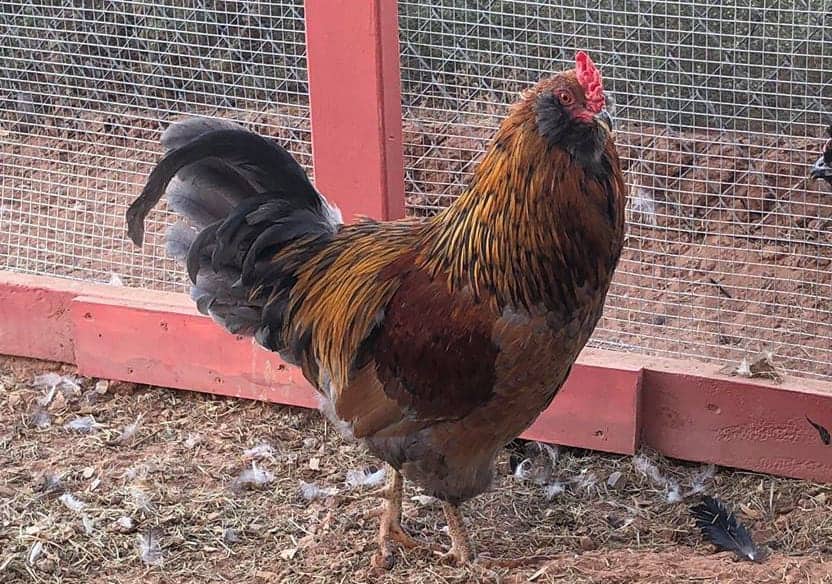
The Easter Egger chicken is not truly a chicken breed but is instead a cross between different chicken breeds. This cross is usually between Araucana and Ameraucana birds. That said, the Easter Eggers mix can be produced when other birds are crossed with either the Ameraucana or Araucana.
This mix produces a chicken that does not meet any particular breed standards but instead displays various colors and patterns.
Araucanas are a chicken breed originally from South America but later brought to the United States. Araucana chickens are famous for laying beautiful blue eggs. However, a disruptive gene can cause many of the eggs of the Araucana to fail to hatch. Therefore, the breed has become rarer and rarer, and many people prefer instead to breed the Easter Egger, which is also capable of producing blue eggs.
The Ameraucana chicken, on the other hand, was bred to be the answer to the unhealthy eggs problem of the Araucana. Ameraucanas were created when Araucanas were produced with other chickens to eliminate the problematic gene from the Araucana chickens.
Easter Egger chickens have inherited traits and appearance features from both sides of their mixed ancestors, and because of this, many Easter Eggers look pretty different from each other.
However, they all share some similar characteristics that make them a popular breed. In fact, the popularity of the breed has never truly experienced a decrease, unlike wide other different chicken varieties since the rise of the industrial hen.
Breed Standard and Appearance
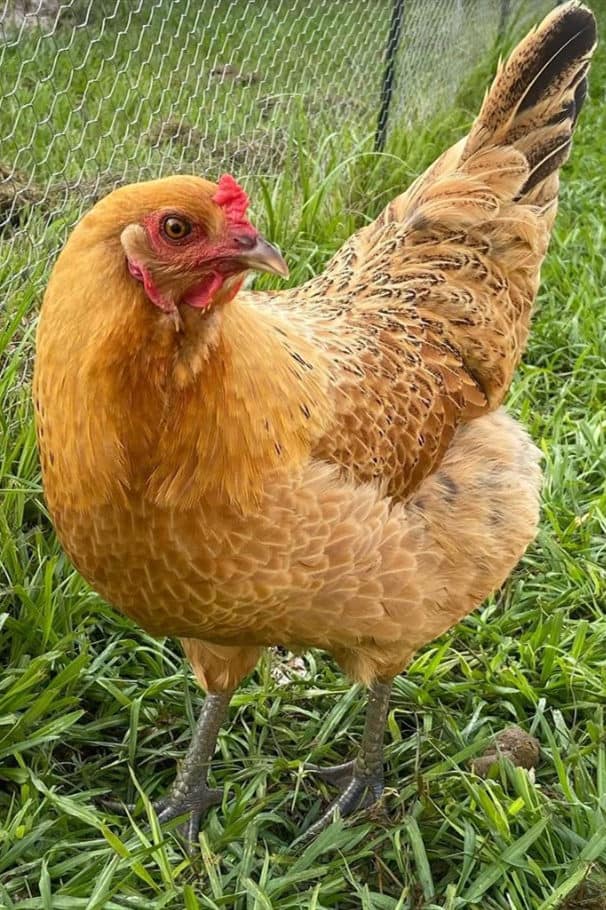
The Araucana chicken has two distinctive features that set it apart from other chicken breeds. First, it is known as a rumpless chicken. It has no coccyx or tail, giving the bird a distinctly rounded appearance. In addition, the Araucana has tufts, and soft feathers that protrude from its cheeks.
Easter Egger chickens sometimes display both of these traits, but because they are more or less a mixed bag of genetics, keepers never really know what their Easter Egger chicks will look like. In addition, because they are not indeed a breed but instead a hybrid, there is no appearance standard.
These chickens usually have a tail, but some may not. They also sometimes display ear tufts but more commonly have a beard. In addition, these chickens can have any type of comb, although it is usually single, and the shape and size of the comb can also vary.
The wattles are usually relatively small and are red. Easter Egger chickens can be found in various solid colors, and their feathers may also display different patterns. The legs of the chicken also vary in color and are usually not feathered, although sometimes they may be.
Easter Eggers are not large birds but have a round, plump body shape. The female Easter Egger chicken usually weighs between 4.5 to 6.5 pounds (2-3 kg), while the male Easter Egger chicken tends to weigh between 5.5 to 7.5 pounds (2.5-3.5 kg).
Personality and Temperament
Easter Egger chickens are known as some of the friendliest chickens available, making them a prevalent choice for backyard farms or coops. They enjoy being patted and do not mind being picked up, so they are pretty easy to handle.
They may even come over to people to see what they are doing. Some Easter Eggers may even hop into their owner’s lap for gentle cuddles.
Because these birds are so friendly, they are an excellent choice for families with children. In addition, these birds’ curious, energetic personalities make them an exciting addition to a flock.
The Easter Egger chicken is quite docile and not easily flustered. They do not like quarreling or pecking fights with other chickens. Due to their gentle nature, however, other chickens may sometimes pick on or bully Easter Eggers.
For this reason, it is best to keep these chickens in a flock solely made up of Easter Eggers or in a flock that includes only gentle, calm breeds.
Easter Egger Egg Laying Capabilities

| Egg Size | Medium |
| Egg Color | Blue, Green, Olive, Pink |
| Egg Laying | Good |
| Cold Hardy | Yes |
| Egg Production | 200 to 280 eggs |
- Easter Egger chickens lay about four eggs each week
- Eggs can be a variety of different colors
- Eggs are extra large in size
Easter Egger chickens are known as excellent egg layers and can produce about four eggs a week. The eggs themselves are usually extra large. This means that the Easter Egger chicken keepers can expect to obtain about 200 to 280 extra large eggs each year.
Depending on the genetic makeup of the hen, the Easter Egger chicken can lay various differently colored eggs, including blue, green, olive, and pink. However, each hen will only produce one color of eggs.
For example, if a hen lays pink eggs, she will only ever lay pink eggs. If keepers wish to obtain a variety of colored eggs, they must have a variety of hens with different genetic makeups.
Easter Egger chickens are not known to be broody. They are not interested in sitting on a nest or raising chicks. This is useful for keepers more interested in gaining eggs to eat. However, if keepers have a rooster and wish to raise chicks, eggs can be placed in an incubator to hatch.
Health Issues and Care
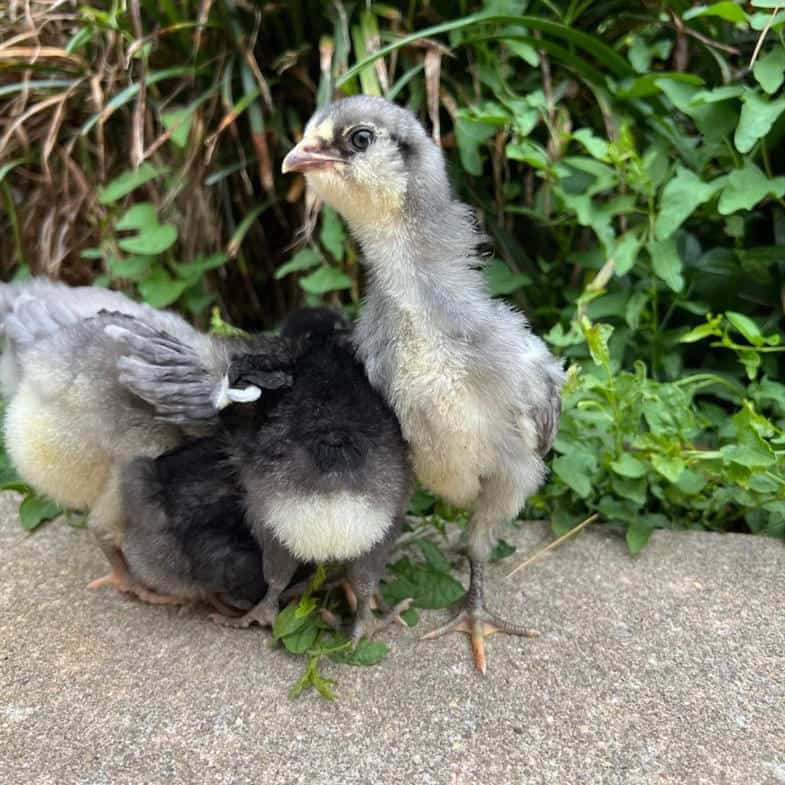
Easter Egger chickens are known as very hardy birds and do not generally encounter any particular diseases or illnesses. They are also very easy to care for and do not require any more special attention than any other chicken breed.
Mites
Sometimes, because they have beards or tufts, Easter Egger chickens may be susceptible to parasites such as mites. Keepers can spray their chickens with a repellent to keep the risk of mites down. Changing out the bedding in the coop and nest areas more frequently can also help to keep the site clean and free of mites.
Beak Defect
Araucana chickens have a genetic defect that causes the beaks of some birds to grow crookedly. The beaks may cross instead of lining up, and this condition can become worse as the bird ages. The crossed beak defect can make it difficult for some chickens to eat and drink without assistance.
However, many chickens with this condition can live long and healthy lives if offered the proper care. Keepers of scissor-beaked birds can trim their beaks and adjust the height of food and water stations to make eating and drinking easier. Luckily, because Easter Eggers have more diverse genetic pool, this condition is generally relatively rare for them.
3 Tips for Raising Easter Egger Chickens
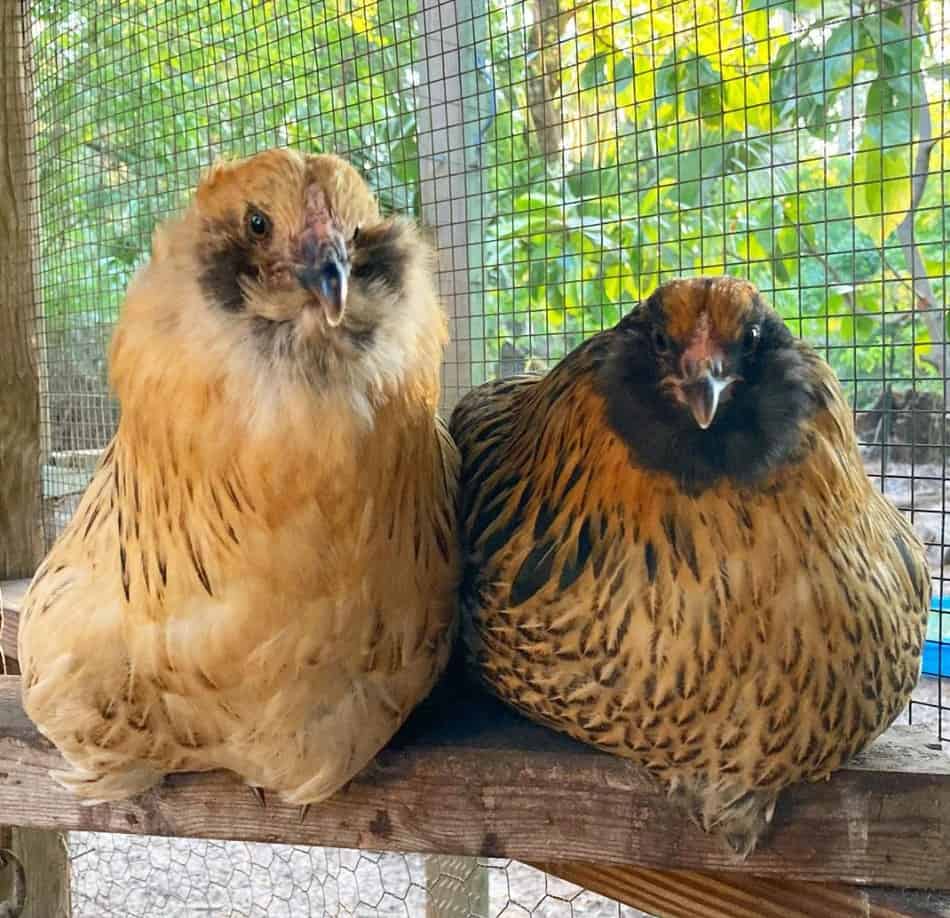
- Offer free-ranging opportunities
- Easter Eggers tolerate a variety of environments
- Easter Eggers are sometimes mislabeled as Ameraucanas.
Easter Egger chickens are pretty easy to care for, and they take confinement in coops well. However, they are also good at foraging and appreciate the opportunity to free range if enough space is available.
Free-ranging not only allows chickens to explore their environment, but it can also help them supplement their diet. This method can bring new vital minerals and vitamins into the chickens’ food supply.
Easter Egger chickens also do well in a variety of different environments. They can tolerate the heat if provided with adequate shade and a constant water supply. They can also handle cold weather and winter months.
Keepers should ensure the chickens have hay or straw to roost in to keep warm. Keepers should also check for signs of frostbite. However, because the comb and wattles of the Easter Egger chicken are generally small, frostbite is not a common occurrence.
Easter Eggers are readily available and inexpensive, costing five dollars or less per chick. This makes them an affordable option for many chicken enthusiasts. However, some keepers may come across birds labeled as Americanas when purchasing chicks.
These are almost always Easter Egger chickens and not the Ameraucana breed. Ameraucanas are usually quite a bit more expensive and are much harder to find. Chicken enthusiasts can usually buy birds labeled Americanas confidently, knowing they are most likely Easter Eggers.
Summary
Easter Egger chickens have been a popular barnyard, backyard, and coop bird for decades, and once a closer look is taken at this hybrid chicken, it becomes clear why. These birds are friendly, curious, and gentle, making them an excellent choice for families with children or for beginner chicken keepers. They also produce many eggs, so they are both useful and fun, making them a great addition to nearly any flock.

Joseph Hudson has been raising chickens for over 15 years. In 2018, he completed the Agriculture & Natural Resources program at Mt. San Antonio College. He currently raises over 1400 chickens on his 7.5-hectare farm. He keeps sharing his experience on raising healthy and happy chickens on Chicken Scratch The Foundry.

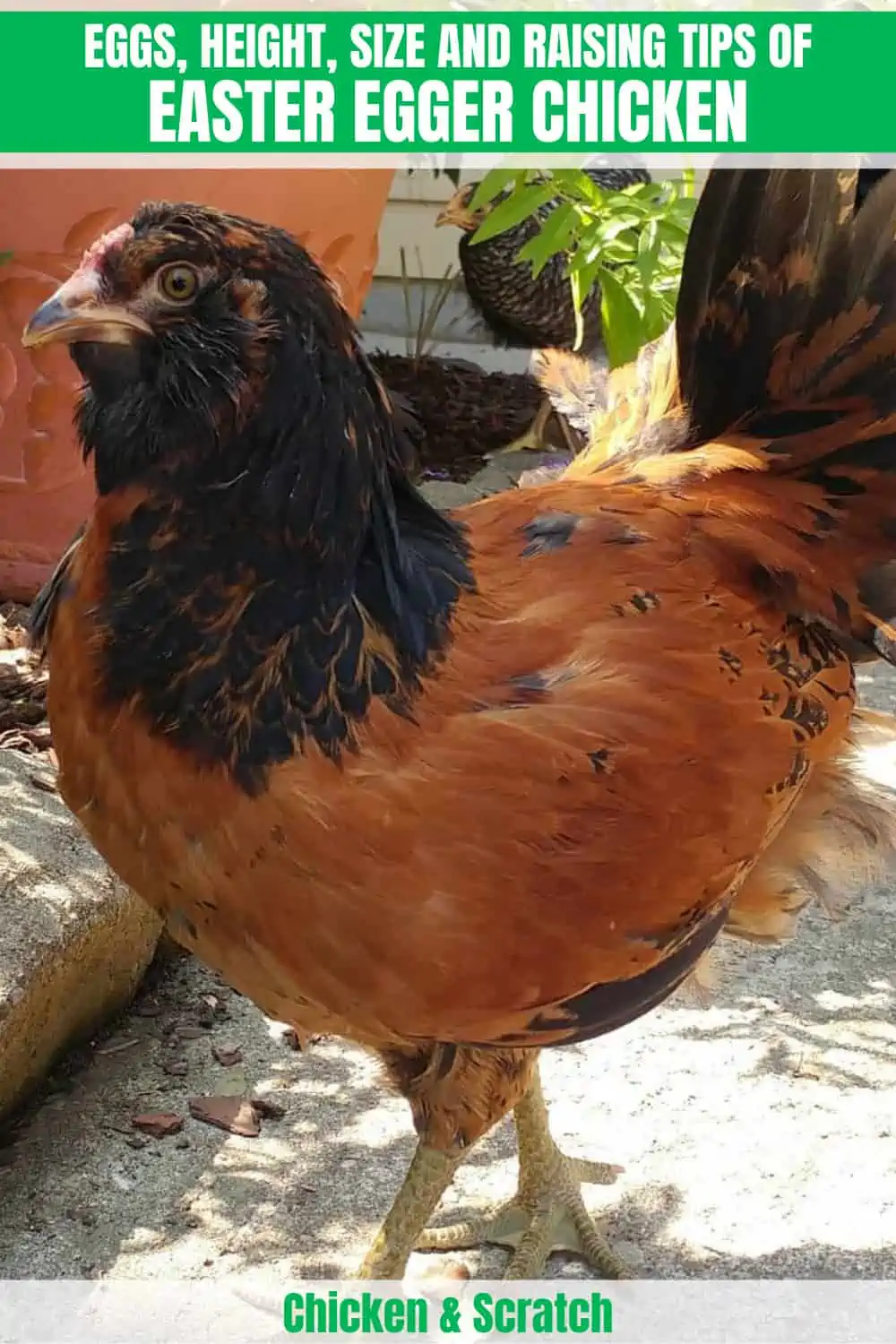







Are they good for hot climates? I live in southern Texas and I need a good chicken that can tolerate the heat. We go into the 80-90s and some times it skyrockets into the 100s every now and then. But not in the winter.
The did excellent for us in New Braunfels and Boerne, Texas. Got them in 2020 during ‘Rona. My neighbor has them now and they are doing good still. We moved to Oklahoma and I currently have 6. Our heat index hit 111 yesterday. Water and shade is key. I have small umbrellas covering a pallet they like to hang out on.
And we have 1 small fan in each coop, hooked up to a small portable
Solar charger. Do they NEED it? Who knows. I just know I like some air flow.
Hope this help you.
I live in Scottsdale Arizona and the hottest day this summer by me has been 117 degrees. My chickens don’t free ranga as there have been a lot of hawks and eagles in the area. I give them shade in their coup and run areas. I have a homemade cooler in there for them. I took a heavy-duty and I cut a hole on top to sit a small fan on cut out two pieces of PVC pipe two inch diameter by six inches long and cut out two holes on the front of the cooler and put the PVC pipe in the holes. I lined the bottom of the cooler with some cardboard and a towel and I put 4 quart bottles of frozen water in the cooler at noon and let it run to dusk doing this on all days that it’s 98 degrees and higher. I also freeze a one gallon bucket of water and put it in an 18 inch base of a flower pot with 2 cups of water and they use this to stand in to cool down since they regulate their body temperature through their feet. My six girls are all doing well. The heat does slow down their egg production though.